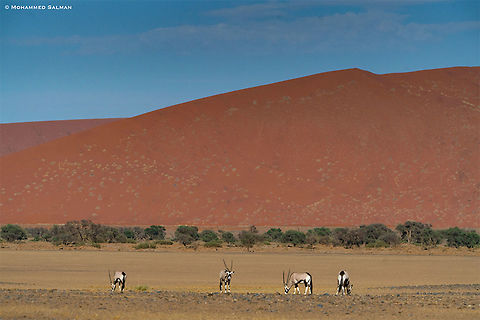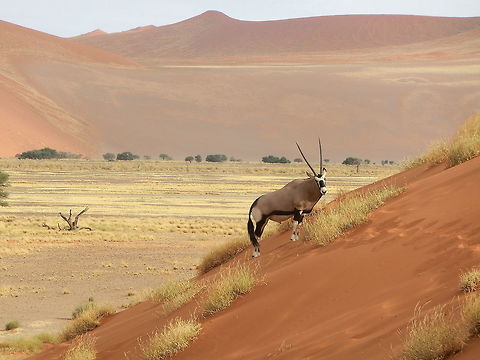
Appearance
Gemsbok are light brownish-grey to tan in colour, with lighter patches to the bottom rear of the rump. Their tails are long and black in colour. A blackish stripe extends from the chin down the bottom edge of the neck through the join of the shoulder and leg along the lower flank of each side to the blackish section of the rear leg. They have muscular necks and shoulders and their legs have white 'socks' with a black patch on the front of both the front legs and both genders have long straight horns. Comparably, the East African Oryx lacks a dark patch at the base of the tail, has less blackish on the legs , and less blackish on the lower flanks.Gemsbok are the largest species in the ''Oryx'' genus. They stand about 1.2 m at the shoulder. The body length can vary from 190 to 240 cm and the tail measures 45 to 90 cm . Male Gemsbok can weigh between 220–300 kg while females weigh 100–210 kg .

Naming
The name "gemsbok" in English is derived from Afrikaans ''gemsbok'', itself derived from the Dutch name of the male chamois, ''gemsbok''. Although there are some superficial similarities in appearance , the chamois and the oryx are not closely related. The usual pronunciation in English is .
Behavior
Gemsbok live in herds of about 10-40 animals, which consist of a dominant male, a few non-dominant males, and females.Gemsbok are mainly desert-dwelling and do not depend on drinking to supply their physiological water needs.
They can reach running speeds of up to 60 kilometres per hour .
References:
Some text fragments are auto parsed from Wikipedia.